How to clean pans without chemistry?

Without exception, everyone loves to eat deliciously, and there are very few who like to wash dishes after cooking, especially when it comes to pots and pans. And if there are not so many difficulties with washing pots - only its dimensions cause inconvenience, then washing and cleaning pans is a painstaking and unpleasant thing. Over time, the carbon layer on the bottom of the pan increases, the bowl loses its attractive appearance.
In the modern world, the issue of the use of eco-products and the complete or partial rejection of household chemicals so harmful to health are becoming more and more relevant. In this article, you will learn how to clean pans without chemistry. Using exclusively improvised tools and products that are available on almost all kitchen shelves, you can clean your kitchen utensils without harming yourself and the environment.
to contents ↑Mechanical cleaning method
Perhaps the most harmless is the mechanical cleaning method. However, it is not an easy way. For mechanical cleaning of the pan from soot, you will need to make a lot of effort.
What is cleaning a pan without chemistry using only mechanical action on it? Here are some available ways to mechanically clean pans and useful tips on how to do it:
- Quickly and efficiently removes old carbon deposits on the bottom of the pan with a metal brush for grinder or drill. This process is best entrusted to a man. It will not be difficult for him, and after 5 minutes your dishes will be like new. The power tool makes the wire brush rotate and the dirt is perfectly cleaned from the surface. Before carrying out this manipulation, do not forget to put on your man in protective clothing and special glasses.
- Similarly to the previous method, you can clean the bottom of the frying utensils using the flap end circle. He puts on a grinder and transforms your kitchen assistant in a matter of minutes.
- The most affordable, at the same time, and the most difficult method of mechanical cleaning, is to clean the pan without chemicals using a metal sponge or scraper. If you chose this method of cleaning, then be patient and strong. It will take a long time to rub the surface. If you want the soot easier to lag behind the bottom, then you can pre-heat the pan. In this case, you will have to protect your hands with special thermo gloves.

Important! If you like to clean the pan mechanically, using a power tool, it is best to carry out such work on the street, since when grinding, pieces of soot will fly off in different directions.
Do not apply this method to ceramic and teflon pans, their surface does not allow mechanical influences.
to contents ↑Thermal cleaning method
This method is not very popular, however, since it is used without the use of various household chemicals, you may like it. During thermal cleaning of pans, the algorithm of actions is as follows:
- It is necessary to put a frying pan on a brick, the bottom up. This must be done exclusively on the street!
- Using a gas burner, start firing the bottom of the cookware on which soot has accumulated until it begins to smoke. This usually happens after about 15 minutes.
- In a pre-prepared large container with cold water, immerse the burnt kitchen utensils.
Important! Do not use this method on cast iron pans. Cast iron does not like sudden changes in temperature and can burst.
- Already at this stage you will see how large pieces of soot simply peel off the bottom.
- Use a metal sponge or scraper to clean the surface and free it from soot. After a sharp temperature difference, the contaminants easily lag behind the surface; you don’t have to make much effort to clean.
As you can see, mechanical and thermal cleaning of the pan without chemistry is pretty quick. But it is desirable to attract a strong half of humanity to this procedure. For fragile female hands, such a process can be too complicated and tedious.
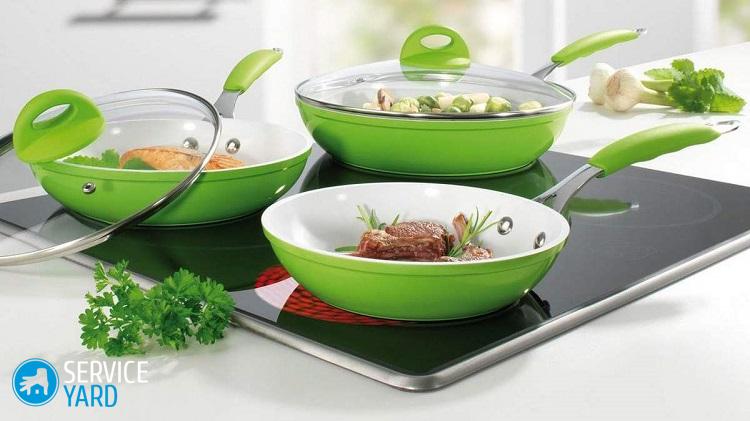
Cleaning the pan with folk remedies
What about housewives, if they want to return to their kitchen utensils their former appearance, without attracting outside help? In this case, it is better to use simple folk remedies that will help clean the pan from soot without chemicals.
Based on the recommendations of experienced housewives, I gathered a lot of useful tips that will help clean the pan from soot with folk remedies.
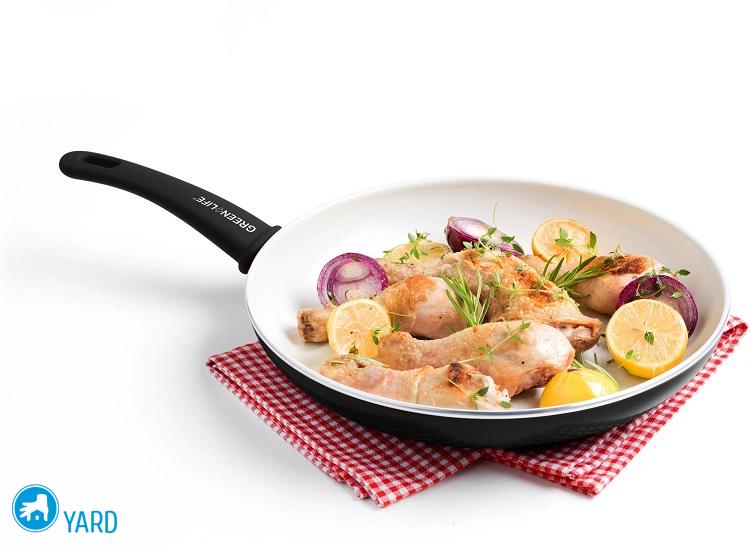
Effective solution based on laundry soap, soda ash and silicate glue
This method was especially popular in Soviet times. This is quite an effective tool and it perfectly removes carbon deposits. However, if the pollution has been layered on the surface for years, then this procedure will have to be carried out for several hours.
The algorithm of actions is as follows:
- Pour water into a large container in which your pan will fit and put it on fire.
- Grate one bar of laundry soap, throw chips into boiling water. Stir the resulting solution thoroughly.
- Then pour in half a cup of silicate glue and half a cup soda ash, which is usually sold in household cleaning departments.
Important! Do not forget to open the window when this solution boils. Thus, unpleasant fumes will erode, and fresh air enters the room. It will not be superfluous to turn on the hood.
- In a boiling solution, it is necessary to lower the pan, which requires cleaning. If the handle on it is plastic or wooden, then it must be removed for the duration of the procedure.
- Leave the dishes to boil in this solution for at least 2 hours. If carbon deposits formed over many years and have not been removed for a long time, then the boiling time can be increased to 5 hours.
Important! As a rule, too dark water indicates the completion of the cleaning process. You can do a little test. A solid object should be tried to remove the carbon deposits - it should be soft.
- After you remove your dishes, you need to proceed to mechanical cleaning. To do this, take a regular sponge. If there are small areas that the deposit has not left on its own, then a metal scraper or knife will help you.
Usually, after boiling in this solution, the pan is cleaned of carbon deposits easily and effortlessly. At the end, you will receive an updated kitchen inventory, which will take on almost its original form.
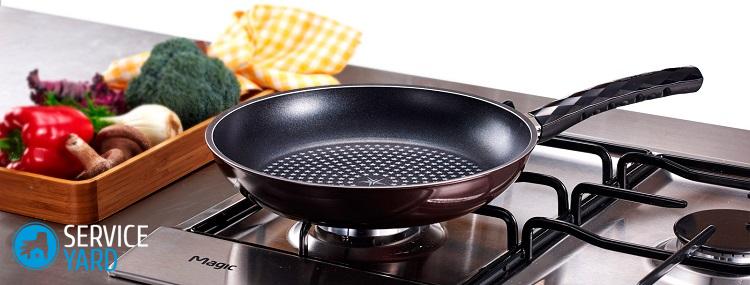
Vinegar Cleaning
Good table vinegar copes well with carbon deposits inside the pan. The purification process is as follows:
- It is necessary to put the pan on the fire, pour 1 glass of water and a third glass of vinegar into it. Boil this solution for several minutes.
Important! For greater efficiency, add 1 tablespoon of salt and the same volume of soda to such a solution. The whole process is accompanied by intense fumes and an unpleasant odor, so it is better to turn on the hood and open the window. This solution perfectly removes not only carbon deposits, but also frozen fat with rust.
- After boiling, pour the solution and wash the dishes with a kitchen sponge.

Use of Activated Carbon
It removes dirt and carbon deposits well-known activated carbon. This affordable tool is available in almost every home medicine cabinet and is able to provide not only a medical effect, but also serve as a means to restore the cleanliness of dishes.
How to wash a pan without chemistry with activated carbon? To do this, you must:
- Pound into powder 10 tablets of activated carbon, pour the resulting powder into a pan.
- Pour some water so that it covers the bottom of the dishes. Then put the frying pan on the fire and bring to a boil.
- After turning off the fire, let this solution stand for one hour.
- After - just wash the dishes in the usual way for you.
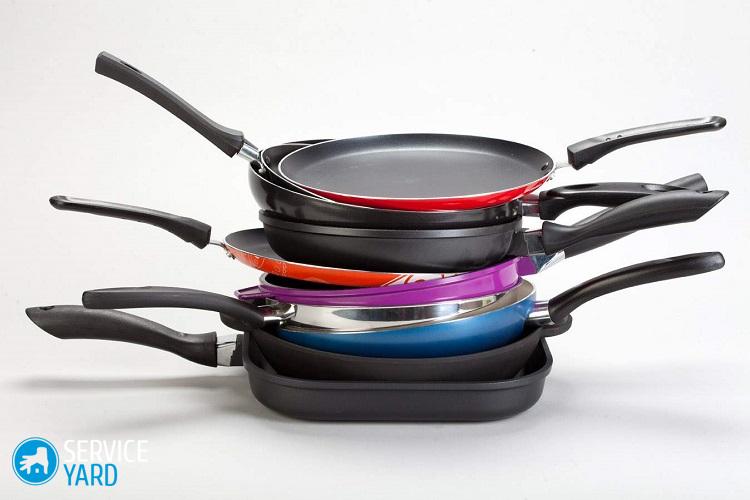
A mixture of borax and ammonia
If you want to keep the outer part of your pan neat, regular cleaning of the surface of the dishes with a mixture of borax and ammonia.
To do this, you must:
- In a glass of warm water, add a couple drops of ammonia and about 10 grams of borax.
- Dip the sponge into the mixture and treat it with contaminated areas.
- Leave the cookware treated with the solution for about 15 minutes.
- Then wash the dishes in the usual way for you, using a dishwashing detergent.
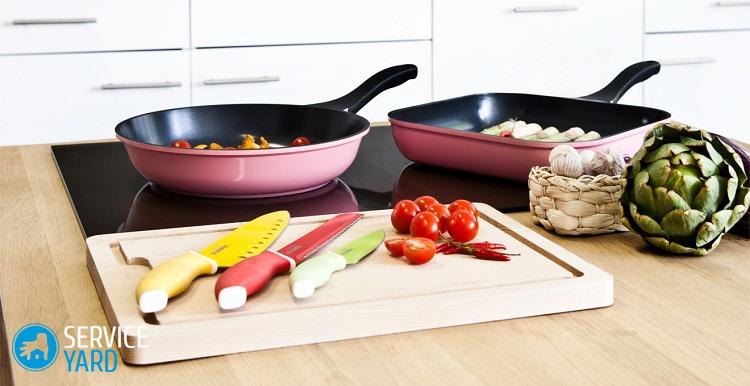
Citric acid cleansing
Another way that housewives use to clean pans is boiling in citric acid. This happens as follows:
- Water is poured into the container and citric acid is added there. It is necessary to proceed from the recommended proportions. For 1 liter of water, 1 tablespoon of citric acid is required.
- Put the container with the solution on the fire and bring to a boil.
- Immerse the pan in a container and set to soak for 1 hour.
After this time, it is enough to wash the kitchen utensils with a sponge for dishes.
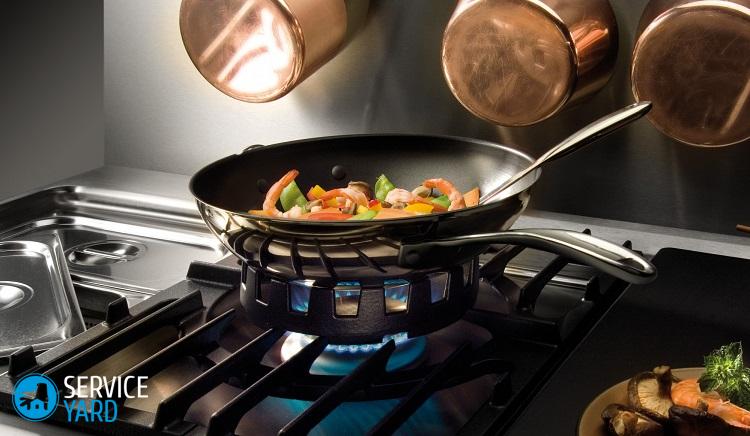
The use of sunflower oil and washing powder
This method is very effective if the bottom of your contaminated pan is corrugated. It is suitable for any other kitchen utensils, except that which has a Teflon non-stick coating, and is very effective:
- In the container, you need to add 2 tablespoons of powder for hand washing and 2-3 tablespoons of vegetable oil.
- Put the container on fire and bring the mixture to a boil.
- Allow contaminants to acidify under the influence of a heated mixture.
After these manipulations, simply wash the pan with a kitchen washcloth. Use a metal sponge if necessary.
to contents ↑Stock footage
As you can see, there are many effective cleaning methods that work without the use of special household chemicals to combat carbon deposits. After reading this article, you learned many ways how to clean a pan from carbon deposits without using chemistry. But remember that it is best to regularly maintain the cleanliness of kitchen utensils, then you do not have to spend effort on removing old pollution.
- How to choose a vacuum cleaner taking into account the characteristics of the house and coatings?
- What to look for when choosing a water delivery
- How to quickly create comfort at home - tips for housewives
- How to choose the perfect TV - useful tips
- What to look for when choosing blinds
- What should be running shoes?
- What useful things can you buy in a hardware store
- Iphone 11 pro max review
- Than iPhone is better than Android smartphones



